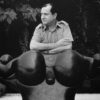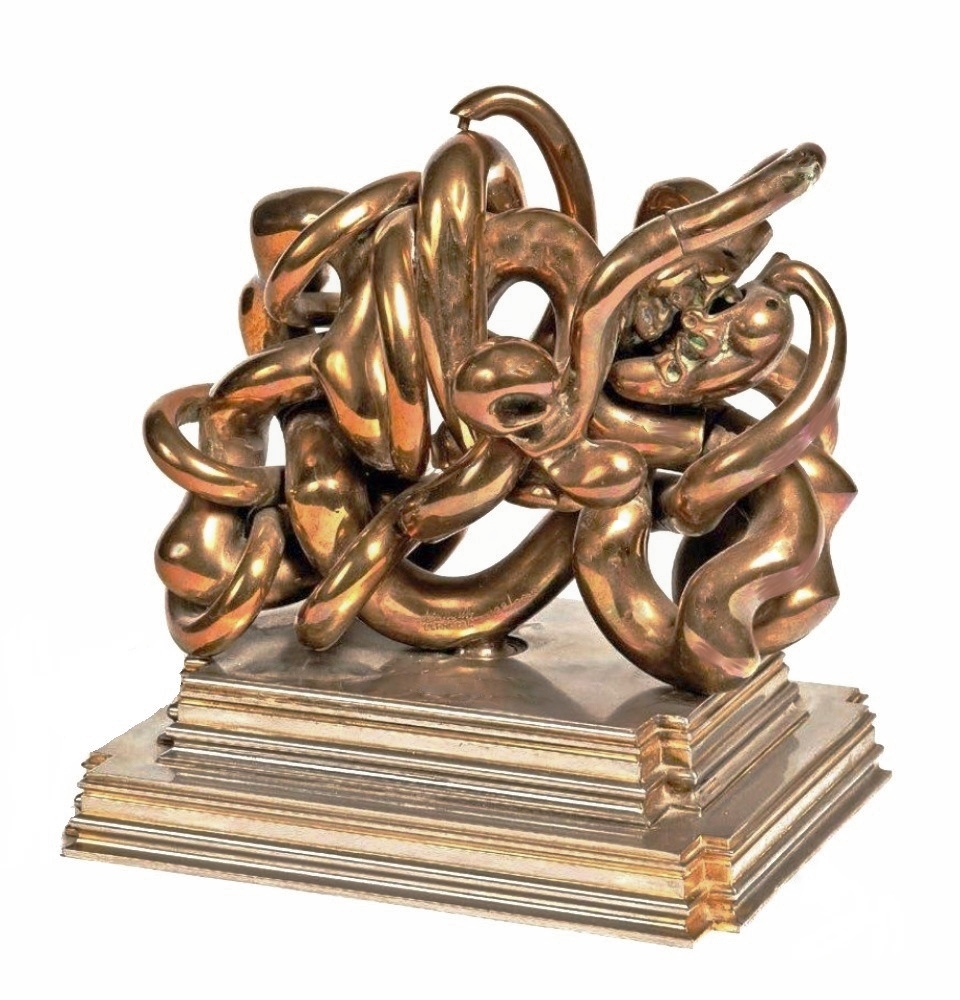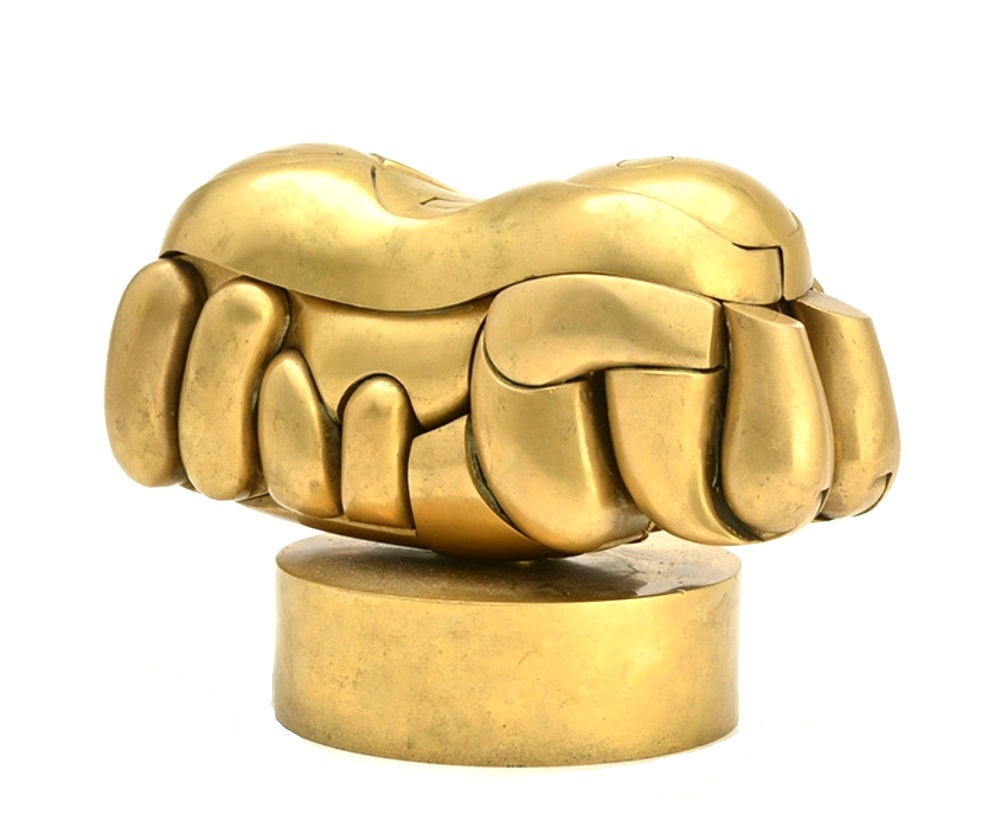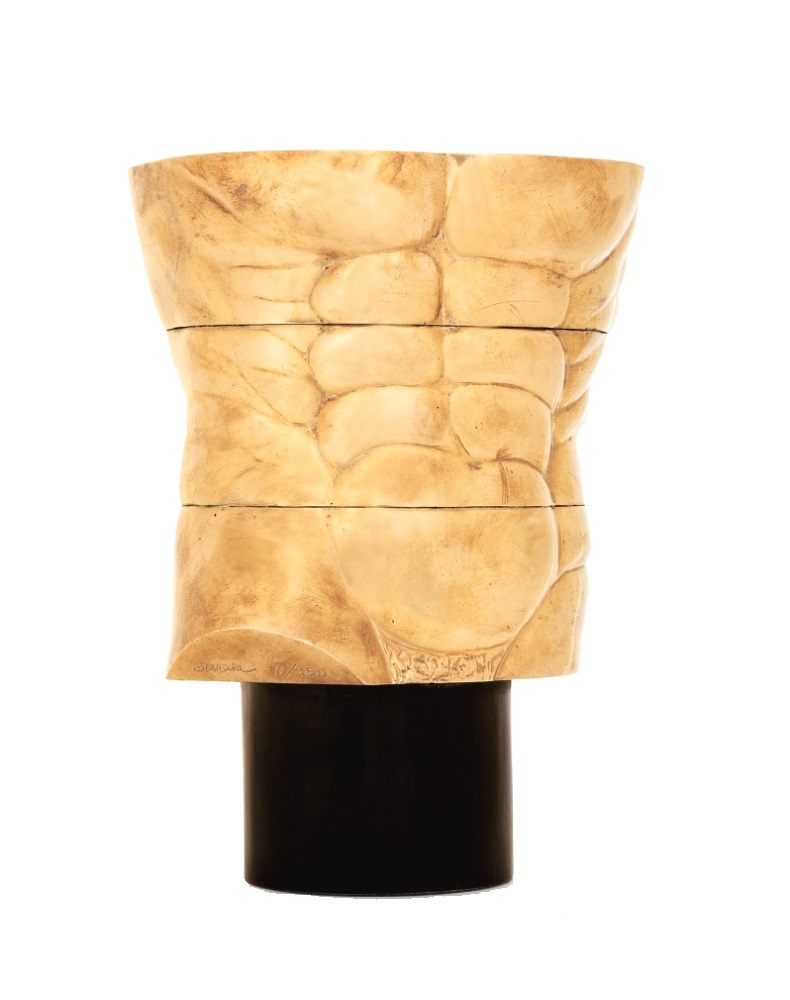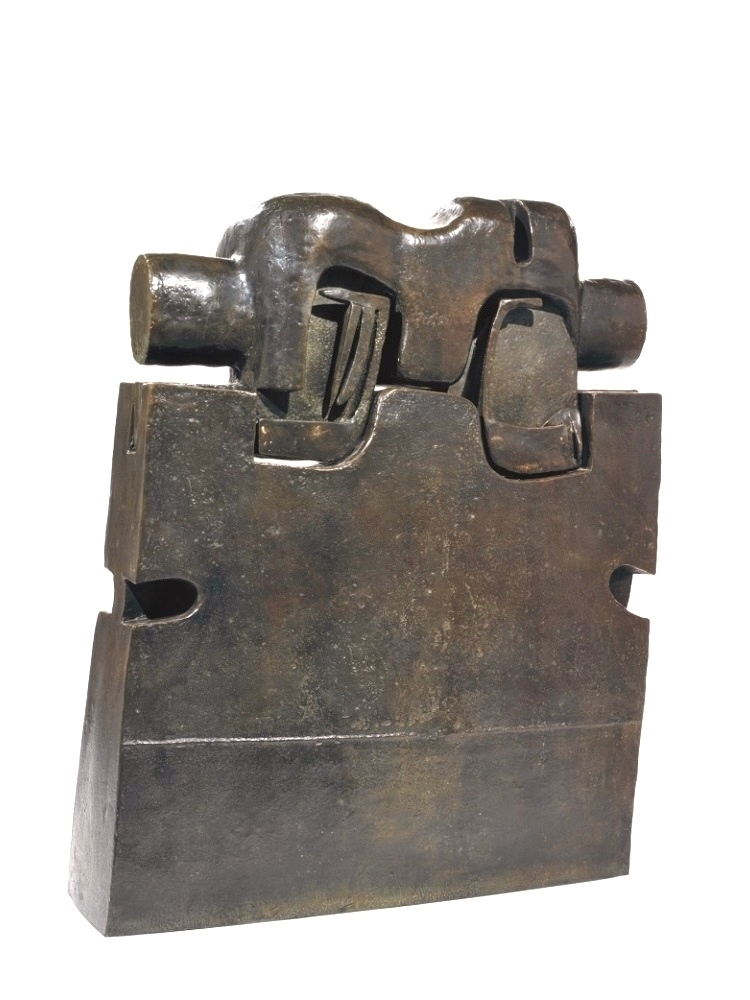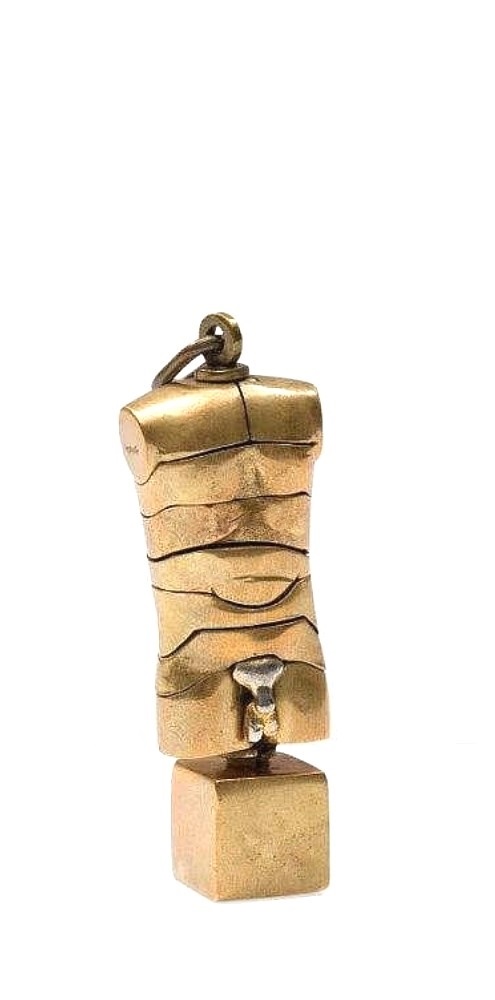Miguel Ortiz Berrocal said Miguel Berrocal was born in Villanueva de Algaidas, Málaga, on September, 28 1933 and died in Antequera, Málaga, 31 May 2006, he was an award winning Spanish figurative and abstract sculptor.
He is best known for his puzzle sculptures, which can be disassembled into many abstract pieces. These works are also known for the miniature artworks and jewelry incorporated into or concealed within them, and the fact that some of the sculptures can be reassembled or reconfigured into different arrangements.
Berrocal’s sculptures span a wide range of physical sizes from monumental outdoor public works, to intricate puzzle sculptures small enough to be worn as pendants, bracelets, or other body ornamentation.
From 1967 to 2004, Berrocal worked in Verona, Italy, and in nearby Negrar, where he worked closely with sculptural foundries to produce his art. His work was exhibited widely throughout Europe and also in North and South America and Japan.
In 2004 he returned to his birthplace in Spain, remaining artistically active until his sudden death in 2006. As of 2014 the Fundación Escultor Berrocal (Berrocal Sculpture Foundation) continues to preserve and promote his artwork and legacy, from its headquarters in his hometown of Villanueva de Algaigas.
In 1952, Berrocal’s first exhibition took place in Madrid at the Galería Xagra. He showed drawings of people and landscapes of Algaidas and Madrid. These were signed with his paternal surname, “Ortiz”. He was awarded a grant to study in Italy. Berrocal was only familiar with Rome through his classical studies. After visiting the sites of Roman civilization, he lived in Rome for several months. There, for the first time, he came upon an exhibit of the work of Picasso in a major exhibition at the Galleria Nazionale d’Arte Moderna. Exhibits of Picasso’s work were prohibited in Spain at the time. In 1954 he returned to Spain to undergo military service. He returned to the Faculty of Exact Sciences and to his drawing and sculpture classes. He found his friend Ferrant, who encouraged him in his work. He was invited to take part in the XXVII Biennale di Venezia, where he exhibited his drawings in the Spanish Pavilion, still signed “Ortiz”.
The award of a grant, by the Institut Français in Madrid, enabled Berrocal to travel to Paris in 1955. Plunging into the stimulating atmosphere that the city offered him, he continued his work as a painter. He frequently saw the sculptors Cárdenas and Giacometti and many others. He returned to Rome, where he met Afro, Burri, Guerrini and other artists. He worked for various established architects, and with a group of young companions, he prepared an entry for a project for the construction of the Chamber of Commerce in Carrara.
For the ornamentation of the facade, the 22-year-old Berrocal invented a solution for the Balaustradas. His work was based on eight modules with which he obtained a number of permutations and combinations that far exceeded the requirement to make each of the building’s balustrades different from the others.
In 1957, he exhibited his first sculptures, in wrought iron, at the Galleria La Medusa, in Rome. The works that he produced during the summer, in the studio he rented in Mougins on the Côte d’Azur, concluded his cycle of activity as a painter. At this time he succeeded in being received by Picasso at La Californie.
He returned to Rome and from then on concentrated on sculpture. Works made in this period included La Boîte découpée, Sarcophage and Grand Torse. These works mark the transition from the analysis of the problem of filled and empty space, and the multiplicity of positions of a single sculpture, to the problem of the combinatorial possibility of different volumes. After making the decision to devote himself exclusively to sculpture, Berrocal had a house/studio, designed by Le Corbusier built in Crespières, near Paris. He had an important first sculptural exhibition at the Galleria Apollinaire in Milan, for which he signed his work definitively as “Berrocal”. Bruno Lorenzelli, a well-known director of an art gallery in Bergamo, became his first dealer. Works produced in this period included Torso ‘’Benamejí ‘’ and Torso ‘’Her’’, first made in plaster and wood, and then cast in bronze and aluminum respectively.
1962 was a year full of events and important decisions. His exhibitions included shows with Ipoustéguy and Müller in New York at the Albert Loeb Gallery. Loeb henceforth acted as his dealer in the United States. His important first solo exhibition in Paris was at the Galerie Kriegel. Kriegel became a very close friend and acted as his dealer in France for many years.
Throughout his life, Berrocal was known for his deliberate attempts to portray variety in his sculptures, often submitting individual pieces to different exhibitions.
In 1964, he was invited to participate in Documenta III in the German city of Kassel.
The artist, who was married to Maria Cristina Blais Saxe-Gotha and Bragança Coburg, the daughter of Maria Pia de Bragança, died in 2006.
Sources Wikipedia and additions by Yoannick Ysebaert #curator
#biography
